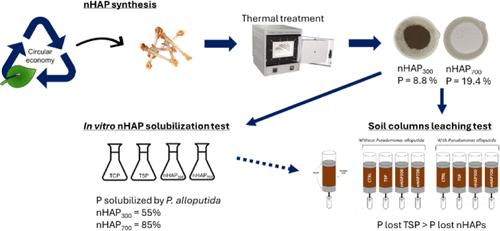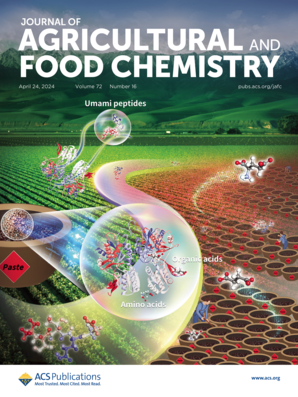Phosphorus Release from Nano-Hydroxyapatite Derived from Biowastes in the Presence of Phosphate-Solubilizing Bacteria: A Soil Column Experiment
IF 5.7
1区 农林科学
Q1 AGRICULTURE, MULTIDISCIPLINARY
引用次数: 0
Abstract
Phosphorus applications in agriculture can lead to significant environmental impacts, necessitating a revolution in current agricultural practices. This study explores the potential of hydroxyapatite nanoparticles (nHAPs) synthesized from poultry bones as P fertilizers. nHAPs were produced at 300 °C (nHAP300) and 700 °C (nHAP700), and their effectiveness was evaluated. An in vitro solubilization test with Pseudomonas alloputida evaluated the bacterium’s ability to solubilize the nanoparticles, assessing dissolved P and organic acids produced. Additionally, a soil leaching test measured P losses and bioavailable P in soil compared to a conventional fertilizer, the triple superphosphate (TSP). nHAP300 displayed heterogeneous sizes, while nHAP700 were approximately 100 nm in size, with a P content of 8.8% and 19.4%, respectively. Pseudomonas alloputida successfully solubilized both types of nanoparticles, with nHAP700 demonstrating a higher solubility than nHAP300. The TSP treatment resulted in higher P losses (6.35 mg) compared with nHAP treatments (nHAP300 0.32 mg; nHAP700 0.28 mg), indicating the potential of nHAP for recycling P from waste. Our findings indicate that nHAP700 are more efficient in P release than nHAP300 but less prone to leaching compared to conventional fertilizers. Utilizing these nanoparticles enables phosphorus recovery from waste and holds significant potential for sustainable agricultural applications.

求助全文
约1分钟内获得全文
求助全文
来源期刊
CiteScore
9.90
自引率
8.20%
发文量
1375
审稿时长
2.3 months
期刊介绍:
The Journal of Agricultural and Food Chemistry publishes high-quality, cutting edge original research representing complete studies and research advances dealing with the chemistry and biochemistry of agriculture and food. The Journal also encourages papers with chemistry and/or biochemistry as a major component combined with biological/sensory/nutritional/toxicological evaluation related to agriculture and/or food.

 求助内容:
求助内容: 应助结果提醒方式:
应助结果提醒方式:


